On Italy’s northern coast alongside the Mediterranean Sea, Genoa is home to incredible food, historical sites, and one of the world’s greatest football rivalries — the Derby della Lanterna. We escape to the iconic port city to take in the sites, sounds, and atmosphere at the most recent match between Genoa CFC and UC Sampdoria.
Genoa’s caruggi are the city’s most iconic feature. These narrow Ligurian streets are a major part of the city’s identity and history, and the architecture that lines them displays the passage of time. It’s not uncommon to see a building erected in the 11th century next door to a house from the 1400s.
It would be best if you got lost around Genoa, flowing amongst the traffic of inhabitants of the city’s port and finding shops where you can get a proper panini. (Hint — if it’s full of locals, that’s the one!)
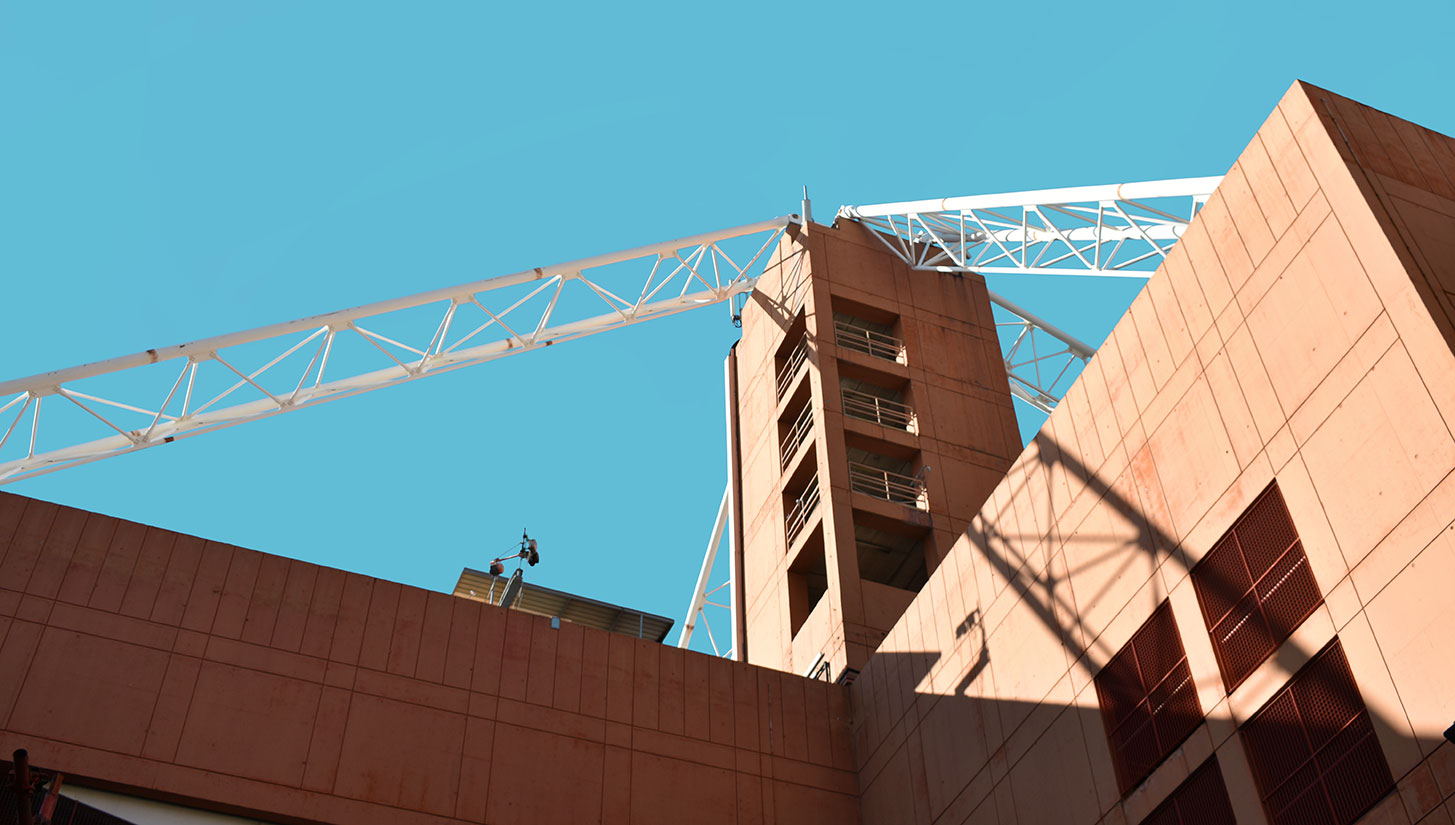
The city by itself can not be explained without the port. The largest harbor in Italy and one of the busiest along the Mediterranean coast, time inexplicably passes slowly by its waters. At night, the dimly lit, meandering caruggi make you unsure of your exact location. You’ll have to trust your nose to follow the scent to the nearest focaccerie — a dreamlike cafe full of Italian meats, cheeses, and pesto. Of course, pesto alla genovese is the city’s most important gastronomic export. A must have for day trips, piesta, a piece of coca bread with pesto on top, fuels our lengthy exploration of the sun-baked city.
The city has a traditional scene mixed with all kind of graffiti on its centennial walls. The multicultural panorama transports you to the origin of the town.
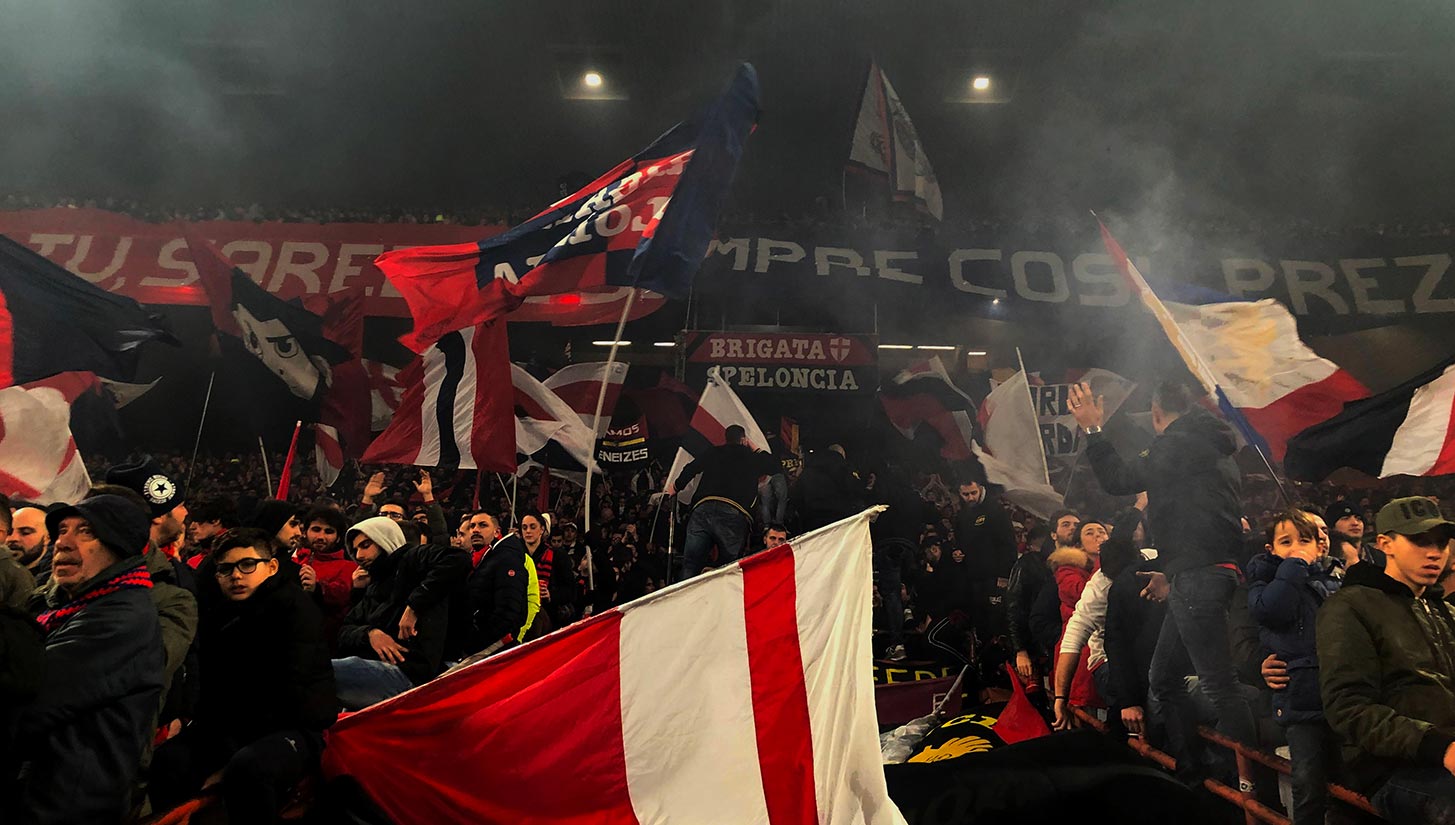
But alongside Genoa’s history, port, and cuisine, there’s one more defining factor of the city — football. Split between the Grifone of Genoa CFC and the Blucerchiati of Sampdoria, the rivalry often spills beyond the walls of the Stadio Luigi Ferraris that both clubs share. I saw this in action the day before the most recent derby match in a liquor store in the heart of Genoa.
The shop’s owner, Marco, was tending to a long-time customer Angellita, who has frequented the store since Marco’s father was its proprietor.
Marco: Ciao Angellita! How are you doing? I was expecting you on Saturday, not today!
Angellita: Ciao Marco. I just came to buy my favorite wine. Could you give me two bottles?
Marco: Sure. But why today?
Angellita: Tomorrow is the derby and I don’t want to see your face! (Laughs.)
Marco: (Laughs.) Good! On a derby day, we don’t serve Sampdoria fans.
Angellita: It is just football. But tomorrow after some cups of wine, we could be good friends even though you are a grifone.

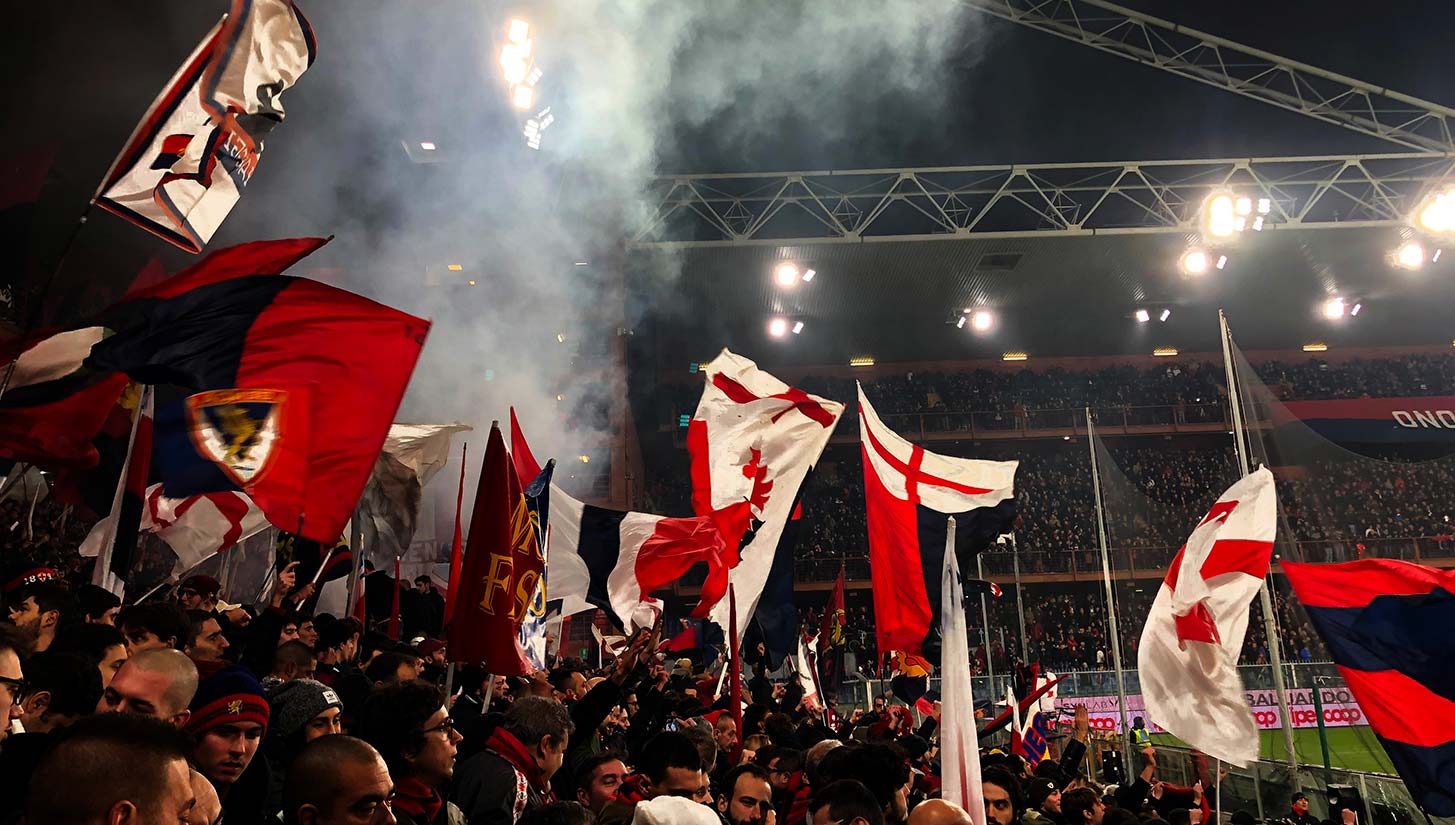
Like many other derbies across the world, this one is separated by two colors, red and blue. Sampdoria, who don the latter of the two colors, call their kits “the most beautiful football shirt in the world.” And that’s far from a hyperbole.
The red half of Genoa are represented by a grifone (griffon) the mythical lion-eagle hybrid that is the symbol of the city. Positioned against Sampdoria’s pipe-smoking, hat-wearing baciccia, you cannot escape the symbology of both clubs. You’re nearly forced to choose the one that fits you best.
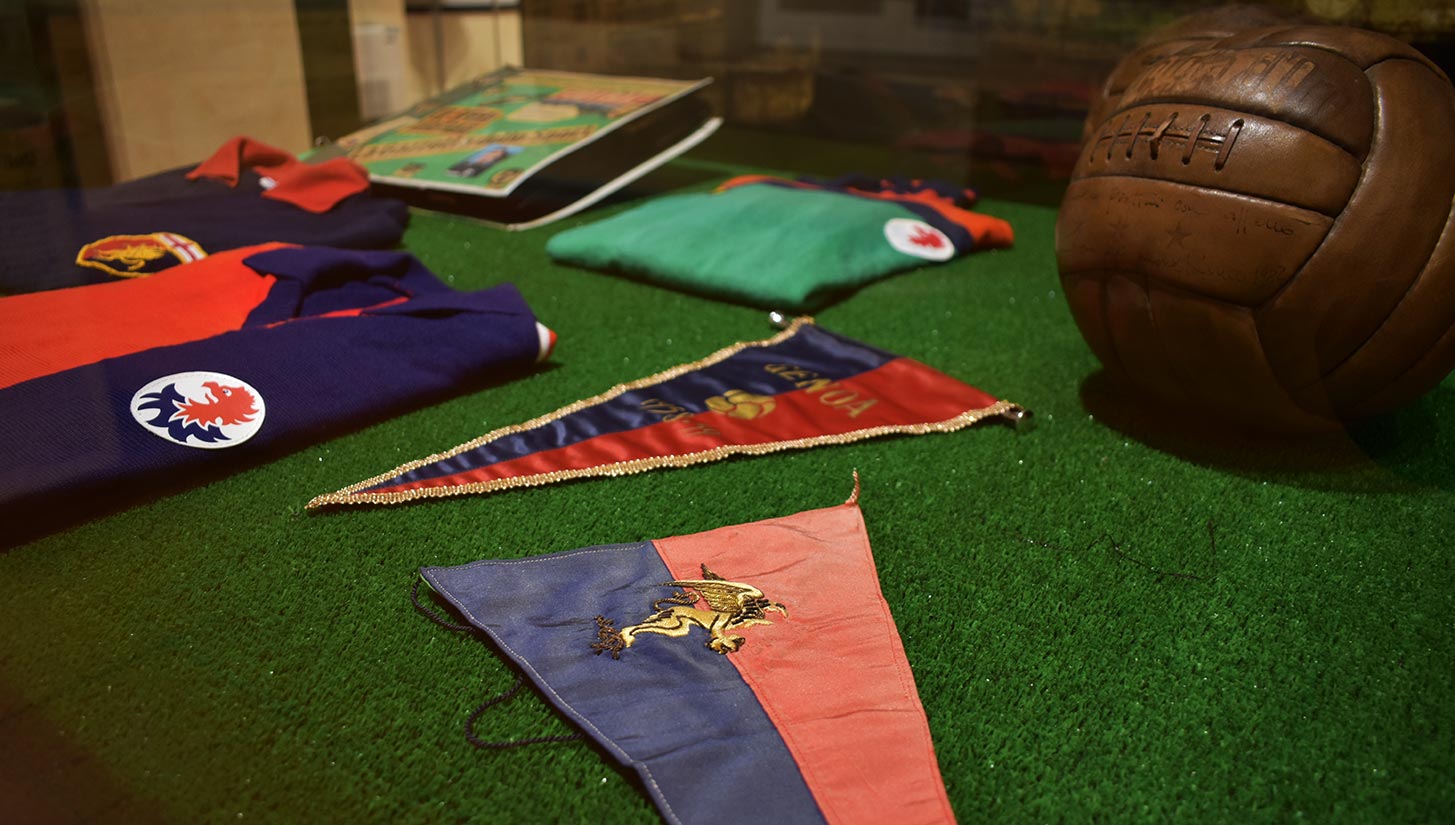
Founded in 1893, Genoa Cricket and Football Club is the oldest club in Italy. As the official name reveals, it was found by Englishmen, and the club started to rule and control domestic competition, winning nine Italian Championships and one Coppa Italia. Their last league title was in 1924, but the club has always been present in the European football scene with some top players donning the rossoblu jersey.
Unione Calcio Sampdoria was formed in 1946 as a result of the merging of the ‘Sampierdarenese’ and ‘Andrea Doria’ teams, adopting the color scheme of both jerseys as well as the names of the two merged clubs. The result? The most beautiful shirt in the world. The glory days for Samp are back in the ’90s, when they won the 1990 Winners Cup and reached the 1992 European finals, though they lost to Barcelona in a memorable match at Wembley.
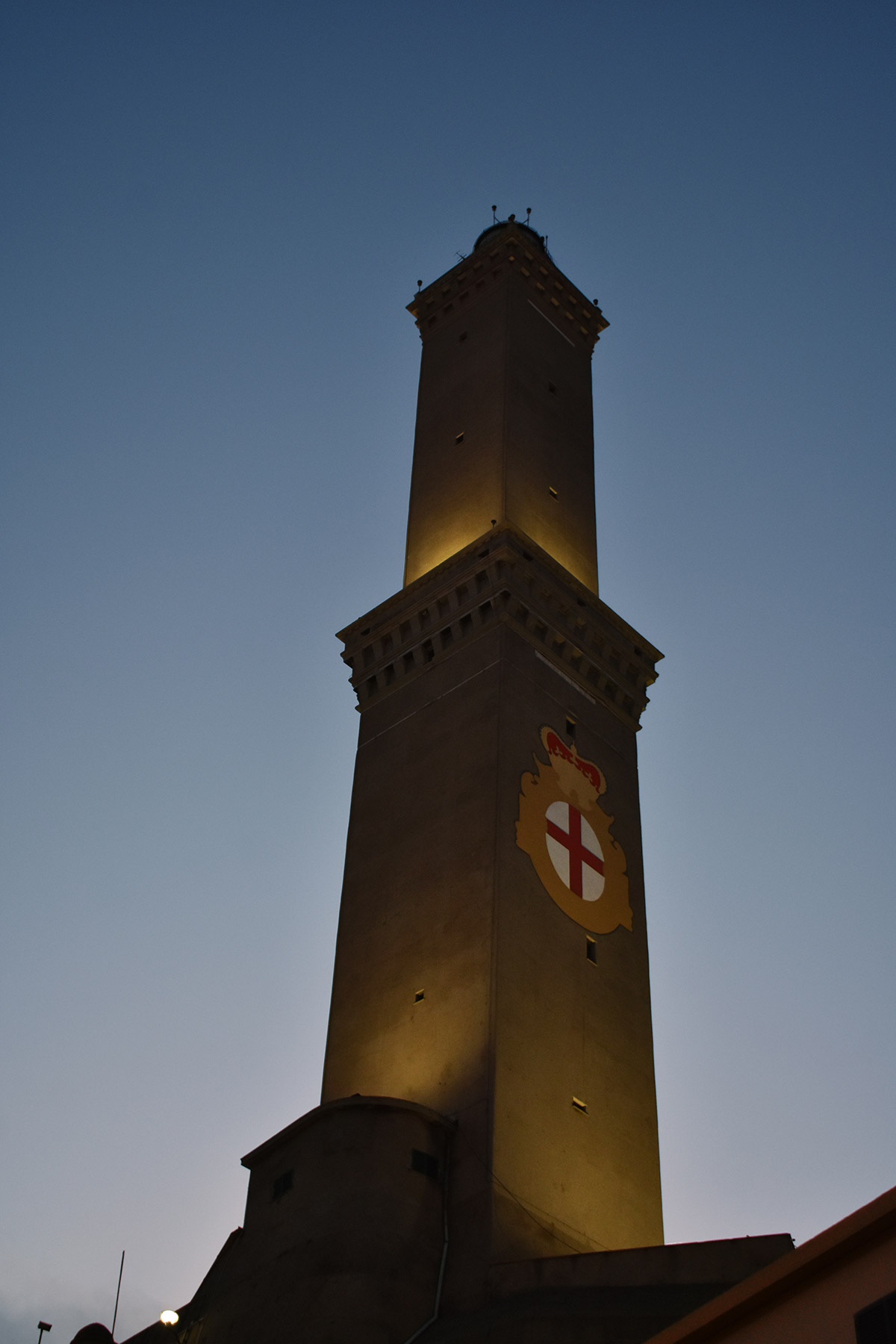
Named after the famous La Lanterna lighthouse that overlooks the port city, the Derby della Lanterna’s meaning is powerful, especially for a city that always looks back to its past and history. For Genoans who’ve left their city, to be back in town means everything. They can breathe and enjoy life, bad moments are gone, and they simply need to take in their surroundings to relieve their stress.
If this derby is especially famous, it is because of its choreography. Both fan bases display their best tifos and pyro shows of the year. The tifosi are willing to show their best during the prematch ceremonies and loudly welcome their clubs onto the pitch.
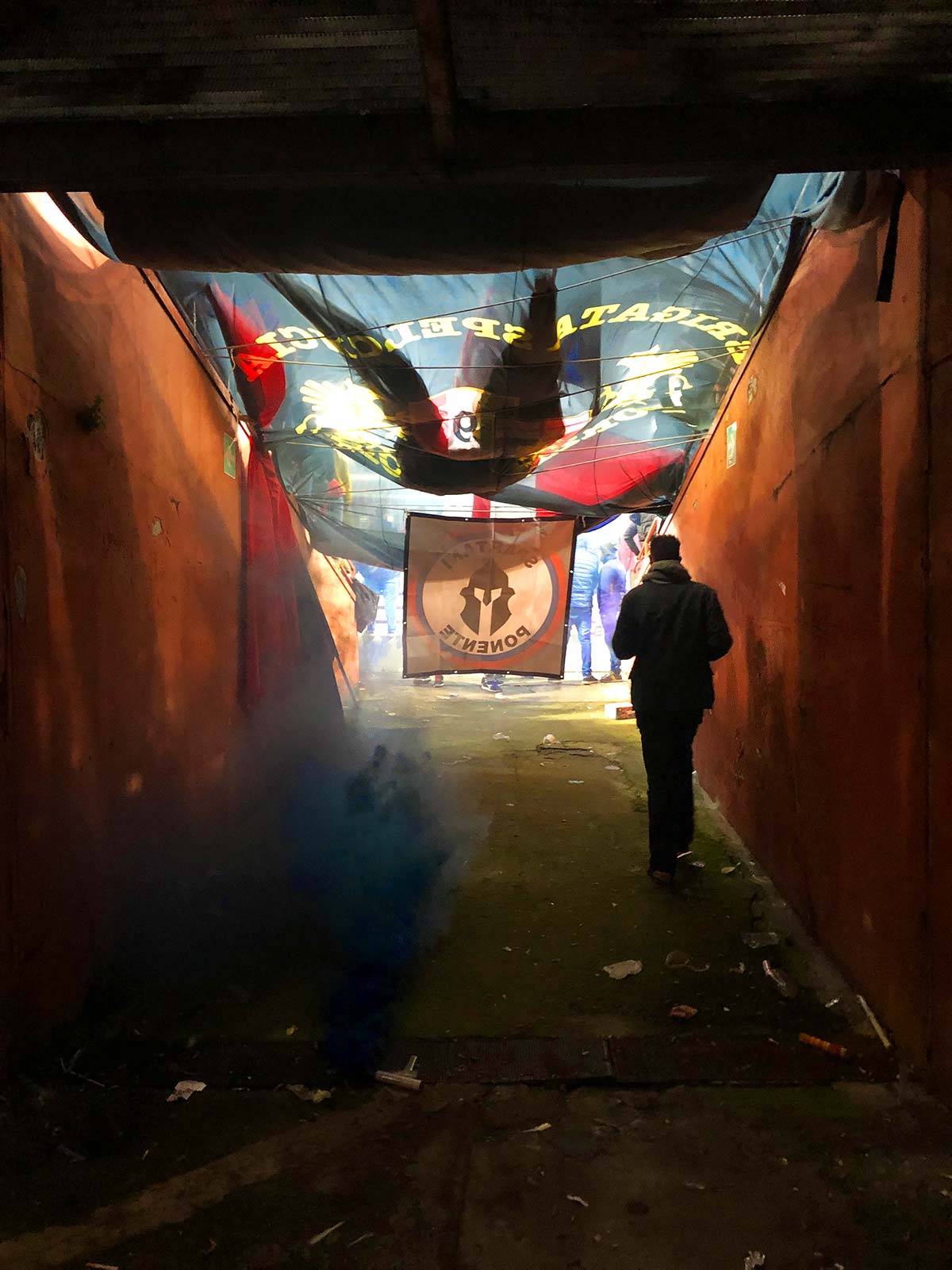
It is Saturday at 11 a.m. The weather has waved goodbye to the rain. It is sunny, a perfect frame for a derby. I am heading to the stadium with a grand plan to visit outside the venue and take some photos. The city is restless in preparation for the match. Both clubs sit near the bottom of the table and face the dark reality of relegation by season’s end.
The winning side will get a vital reinforcement before the Christmas holidays. Throughout the day, people in town are wearing their colors, and you can notice that something big is about to come. I finally arrive at the stadium, a spartan rectangular behemoth right on the banks of the Bisagno stream.
The municipal Stadio Luigi Ferraris was inaugurated in 1911 and currently has the capacity for over 35,000 spectators. With a very British structure, the facade looks quite old fashioned, but has a majestic identity and many consider it to be one of the best venues for football in the whole country. Countless memorable games and episodes have transpired on the pitch and in the stands, well known as the ‘Marassi’ after the quarter where it is located.
Ambulances and police cars are everywhere, so you know it’s an important game. Genoa and Samp fans do not like each other, but there is a mutual respect amongst them. This could be because in addition to rooting on their clubs during the derby match, they’re intertwined in a competition of their own.
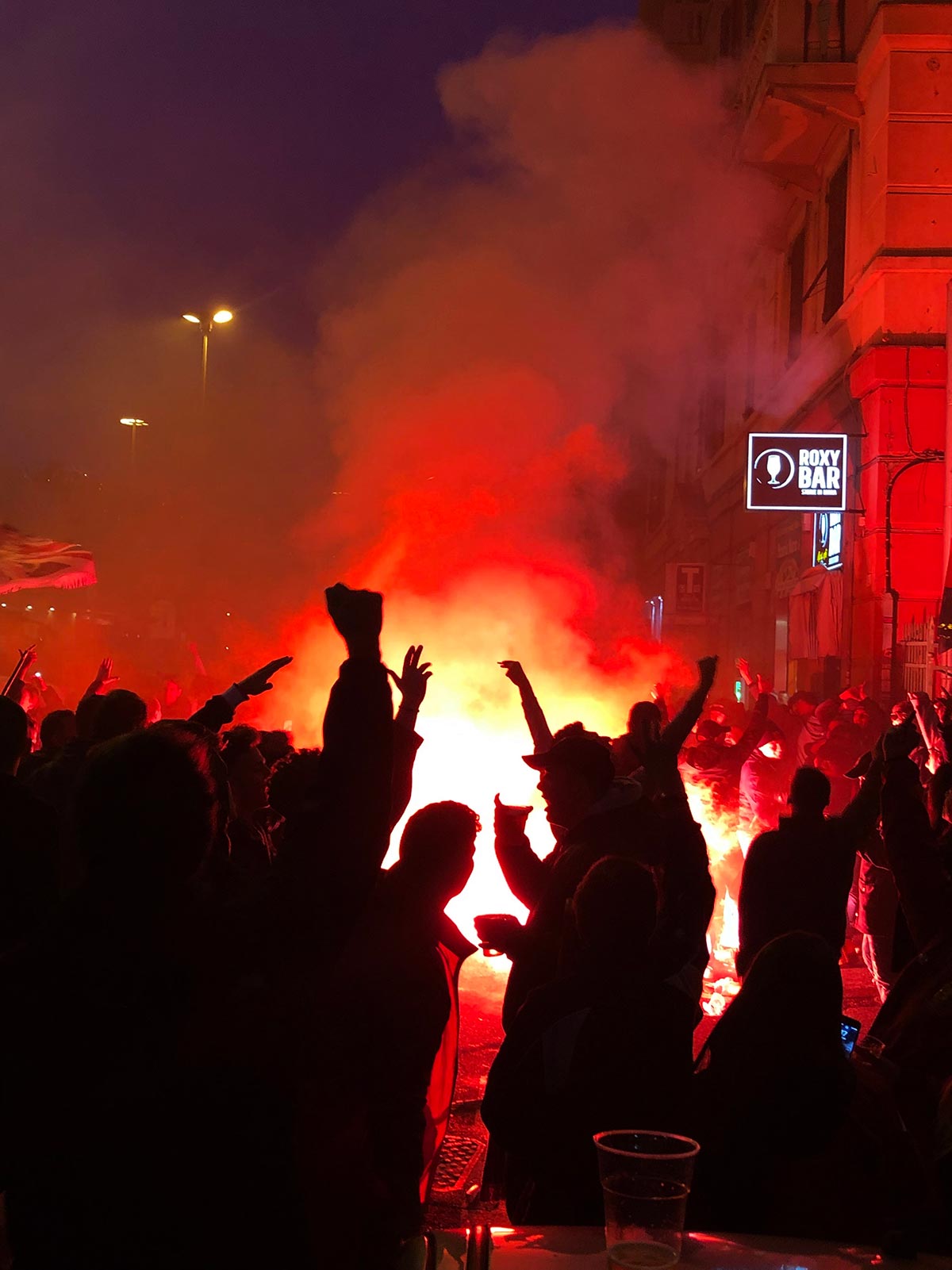
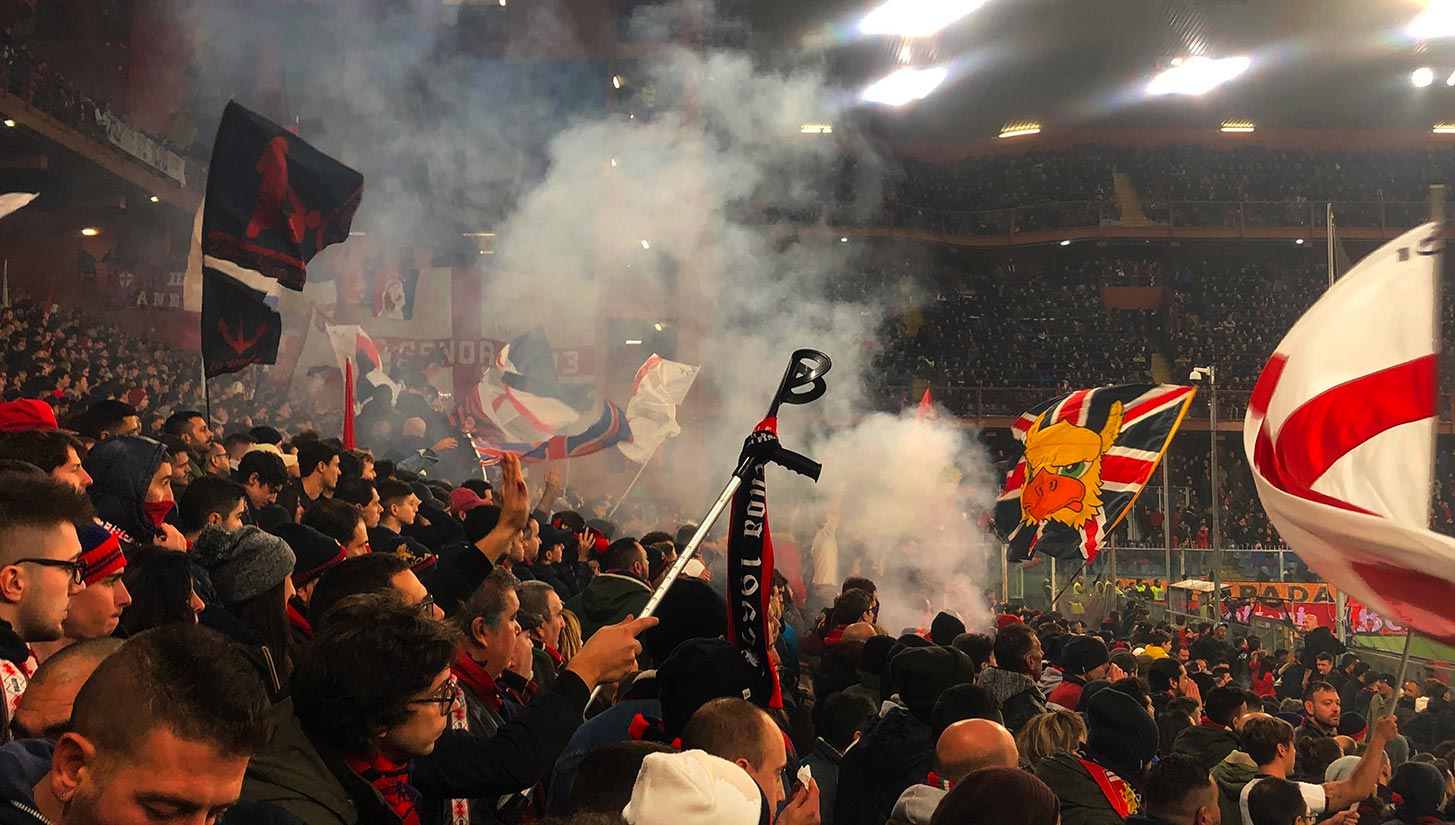
As if the action on the pitch isn’t enough, the stands of the Luigi Ferraris plays host to a concurrent tug-of-war between the Blucerchiati and Rossoblu. Die-hard fans are eager to show who is the most original, crazy, ironic, and robust supporter.
It is not easy to stand in either supporters’ section behind each goal. The seat rows are archaic and steep, yet no one sits. But the dangers of standing are just the beginning of the precarious fan experience at the Derby della Lanterna.
Flags, smoke bombs, fireworks, scarves, and chants disorient the uninitiated, and standing in your place is nearly impossible. There is a very South American feel to the atmosphere — it reminded me of my time in Argentina. Nobody pays attention to the game, you just need to show off your pride and love for the team!
The atmosphere is mental. Supporters protest referee decisions even though they can barely see what’s transpiring on the pitch. I can only laugh and a wave of euphoria hits me. I am in the proper match and it is crazy. This is football at its best.
The game ends with a victory for UC Sampdoria with the winning goal scored in the 75th minute by Manolo Gabbiadini. The “away” fans lose their minds, celebrating the goal as if it were a World Cup final winner. Genoa CFC supporters are deflated. The defeat means dark times and a bleak future for them, in terms of both football and town life. After all, Sampdoria and Genoa share the passion, the stadium, and the city.
If there is a football book about calcio rivalries, of course the Derby della Lanterna will have its own chapter. It is perhaps the most significant and romantic because of what it means for the humble people of this Italian centennial city. Welcome to the streets of Genoa, where football beats at its best!
Photography by Ignasi Torné Gualdo for Urban Pitch.













